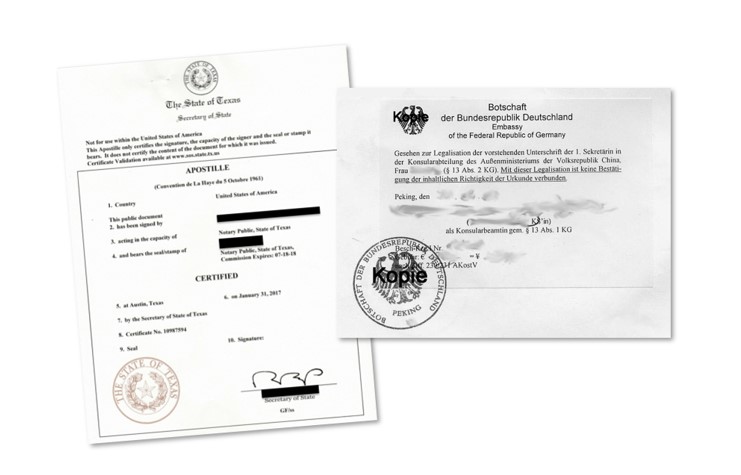Legalisation documents & apostilles
Whether it be an apostille or a legalisation document, we can advise you on the best approach, and even attend to the actual document procurement process if you’d prefer. Simply ask.

Legalisations
When it comes to international legal matters, public agencies at home and abroad are regularly required to determine if official documents issued by a foreign agency, are indeed authentic.
A definite answer is needed here before ever considering preparing certified translations (if required) of these kinds of materials.
The legalisation procedure is a long-standing method employed to determine the authenticity of foreign official documents.
Here, the authenticity of the relevant foreign document is examined and, where appropriate, it will be certified by one public agency located in the foreign country (such as an overseas Ministry for Foreign Affairs) and one located at home (such as a German diplomatic mission). This is known as a pre-certification and supplementary authentication process.
Apostilles
The laborious and costly nature of this two-step legalisation process led to a whole series of countries coming together in 1961 to sign the Hague Convention on the introduction of the “apostille” process. Replacing the legislation method, an apostille is issued by a public agency of the State in which the official document was issued.
This apostille confirms the authenticity of the official document, and an original copy of that document must be presented for the apostille to be issued. Unlike the legalisation process, there is no need for the involvement of a German diplomatic mission in this instance.
The apostille procedure can be used between any two states that have signed up to the Hague Convention. Around 115 states have currently done so. A current list of the contracting states is available on the website of the German Foreign Office.
So, if you need to present an official record or document in a non-signatory state, the legalisation method will be needed. It that case the legalisation procedure, as described above, will be applied.


